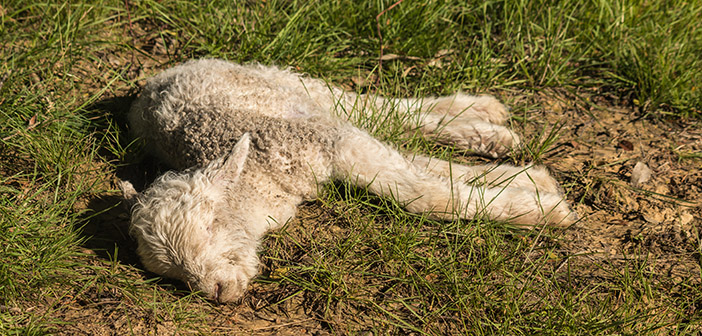The importance of understanding the reasons for lamb losses and having an active flock health plan were highlighted in a recent Mole Valley Farmers’ survey of 754 sheep producers.
Around a quarter of respondents had a lamb mortality rate from birth to two weeks of age of over 6%, compared to a target of under 5%. At the same time, average scanning percentage was 166% compared to an average lambing percentage of 154%, which suggests producers had already lost 7% of lambs pre-lambing. However, very few farmers surveyed were concerned about losses.
Lamb mortality
Vet Andy Adler of Molecare Farm Vets said this represents a huge loss in potential income and raises alarm bells around sustainability.
“These producers have potentially lost at least 18 lambs from every 100 ewes between scanning and two weeks old,” he said. “Is this consistent with consumer expectations, being sustainable and getting the best of your resources? For a sustainable sheep industry, we need to have a low mortality rate and be able to show that we have a low mortality rate.”
To help survivability, Mr Adler said understanding the reasons for lamb losses is essential. This means routinely carrying out post-mortems on dead lambs and understanding why ewes are losing lambs between scanning and lambing – something nearly half of respondents never did.
Most farmers recognised the value of nutrition, colostrum quality and hygiene in driving down lamb mortality, but could perhaps fine-tune management better by discussing it with a vet or nutritionist.
Nutrition
Mr Adler said nutrition is number one when it comes to flock performance. “Nutrition drives production, growth and health. What you feed an animal is what you get out.”
With that in mind, he says he was surprised to see that 62% of farmers scanned their ewes, but just 45% used that information to target feed ewes according to how many lambs they were carrying. He believes targeted feeding is a key component in helping to boost lamb survivability, whilst also making sense financially. This will ensure ewes are in optimum condition and produce strong, healthy lambs and plenty of quality colostrum.
Parasite control
Having an effective worm control strategy could also benefit overall flock performance, yet 60% of farmers surveyed did not have a parasite control plan in place.
Mr Adler added: “Just 12% of farmers had known wormer resistance on farm. According to academic studies the reality is that wormer resistance is found in more than 50% of farms. This suggests more farmers need a control plan to better understand wormer resistance.”
He also admitted to being “amazed” that 54% of farmer wormed 75-100% of ewes at tupping when Sustainable Control of Parasites (SCOPS) advice is to only treat lean, immature or clinically affected ewes at this time.
“You don’t need to be treating everything. It’s unnecessary cost and adding to wormer resistance. It’s important to discuss your treatment strategy with a vet or SQP,” Mr Adler said.
The numbers
Mortality
- <5% target mortality rate from birth to two weeks old;
- 1/4 had a mortality rate of >6% from birth to two weeks old; and
- 50% of farmers never carried out post mortems.
Parasite Control
- 60% didn’t have a parasite control plan;
- 14% didn’t know if they has an issue with wormer resistance; and
- 54% wormed 75-100% of their ewes at tupping.
Nutrition
- 62% scanned their ewes;
- Only 42% had a targeted nutritional plan for their ewes;
- 82% monitored ewe body condition score; and
- 19% saw nutrition as the number one way to improve lambing percentage.


